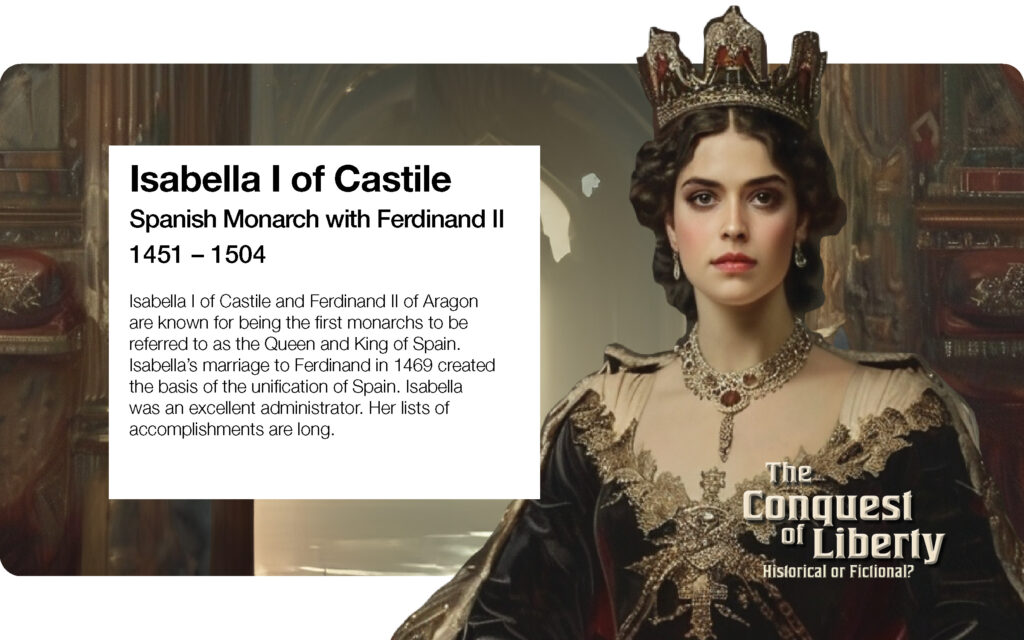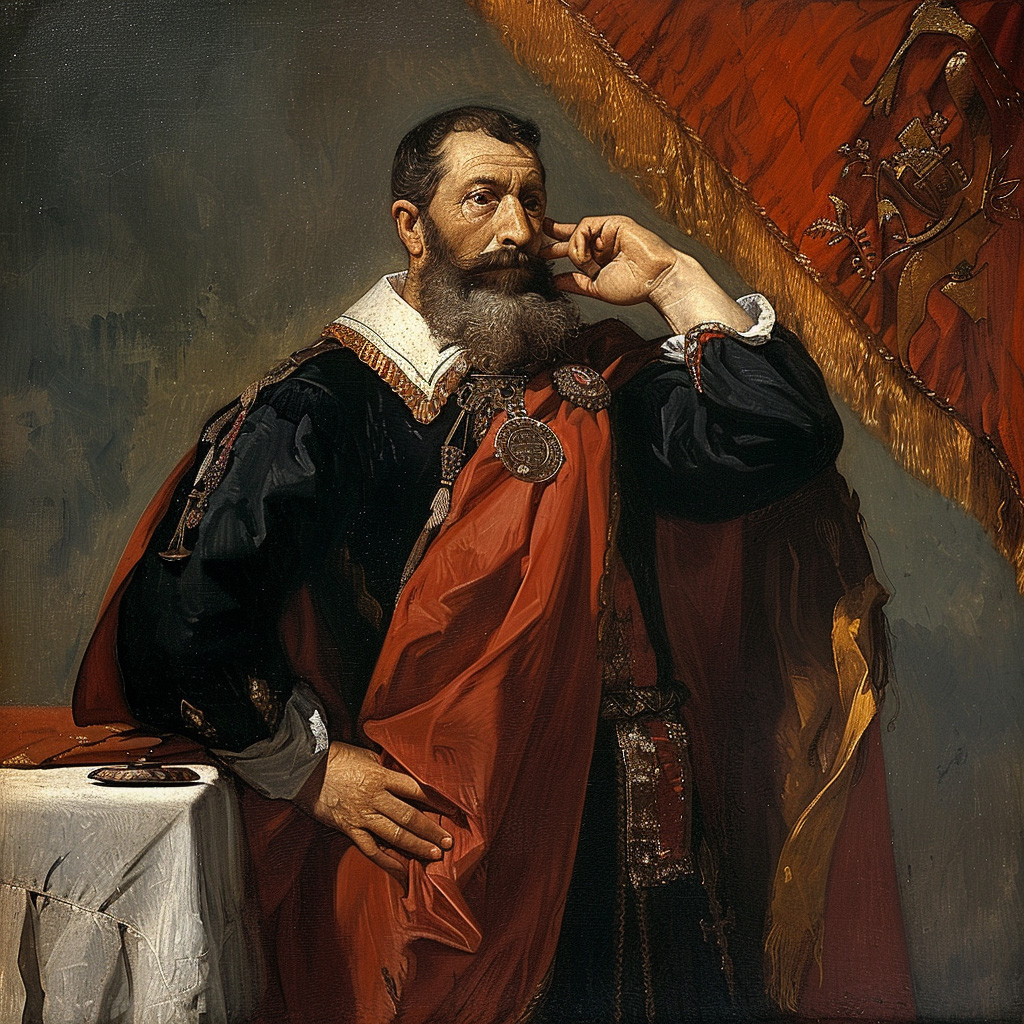
Spanish Monarch with Ferdinand II
1451 – 1504
Isabella I is an important historical figure in the Conquest of Liberty. Though she died roughly six years before the story in The Conquest of Liberty begins, she, along with Ferdinand II drastically influenced the world’s march toward liberty. And not necessarily intentionally or positively.
Customarily women from royal and noble families had little choice in their marital arrangements. Not so with Isabella. At age six, she was promised to the younger son of King John II of Navarre, a boy named Ferdinand. Years passed, important people died, new kings reigned, and Isabella got promised to Charles of Viana, who was then imprisoned by the king to break off the engagement. When Isabella refused a marriage to Afonso V of Portugal, civil war broke out. To keep the peace Isabella was then betrothed to Don Pedro Giron Acuna Pacheco. But he died on his way to marry Isabella. Next was Edward IV of England or Richard, Duke of Gloucester. Then King Henry, Isabella’s half-brother, tried to force her to marry Charles, Duke of Berry which he thought would unite Castile and France. Isabella said no and finally snuck out of the castle and eloped with Ferdinand.
Why does this matter? It illustrates Isabella’s strong will and independence. Too bad she didn’t extend that same independence to the Jews and Muslims in the Iberian Peninsula.
Isabella was an excellent administrator. Her list of accomplishments is long. For her part in the Conquest of Liberty, it was her and King Ferdinand who launched the exploration of the New World by supporting Christopher Columbus. She and Ferdinand united Castile, Leon, and Aragon and conquered Granada converting the Muslims to Christianity expelling or expelling them from the country.
Her personal confessor for many years was our very own Cardinal Hernando Talavera, who because of his excellent service and temperament, was named by Isabella the new Archbishop of Granada. Isabella held Talavera in the highest regard. Some historians believe it was Talavera who facilitated and recommended the Columbus venture. It was after her death, that Cardinal Cisneros felt safe persecuting Archbishop Talavera.
Isabella I of Castile and Ferdinand II of Aragon are known for being the first monarchs to be referred to as the Queen and King of Spain. For good or bad, however you choose to read history, the Catholic Monarchs as they were called, stirred up the world. Isabella’s marriage to Ferdinand in 1469 created the basis of the unification of Spain. The basis I underscore is not the official unification. That didn’t happen for years. Her reforms and those she made with her husband had an influence that extended around the world.
Let me sum up with a short summary:
Their actions included the completion of the Reconquista, the Alhambra Decree which ordered the mass expulsion of Jews from Spain, initiating the Spanish Inquisition, financing Christopher Columbus‘ 1492 voyage to the New World and establishing the Spanish empire, making Spain a major power in Europe and the world, and ultimately ushering in the Spanish Golden Age. Together with her husband, Isabella was granted the title of “Catholic Monarch” by the Spanish Pope Alexander VI and was recognized as a Servant of God by the Catholic Church.
Try to say that in a few words.

